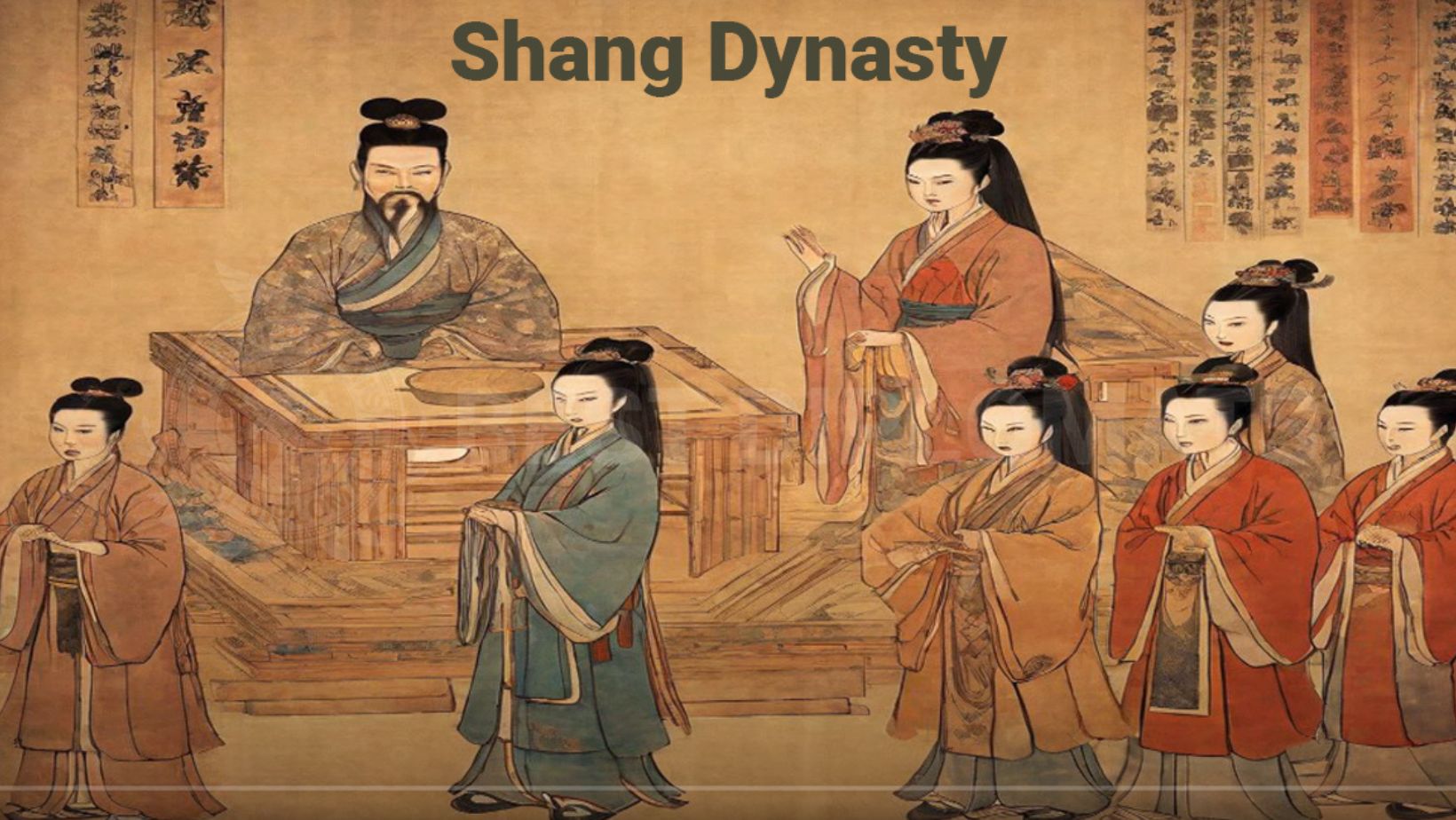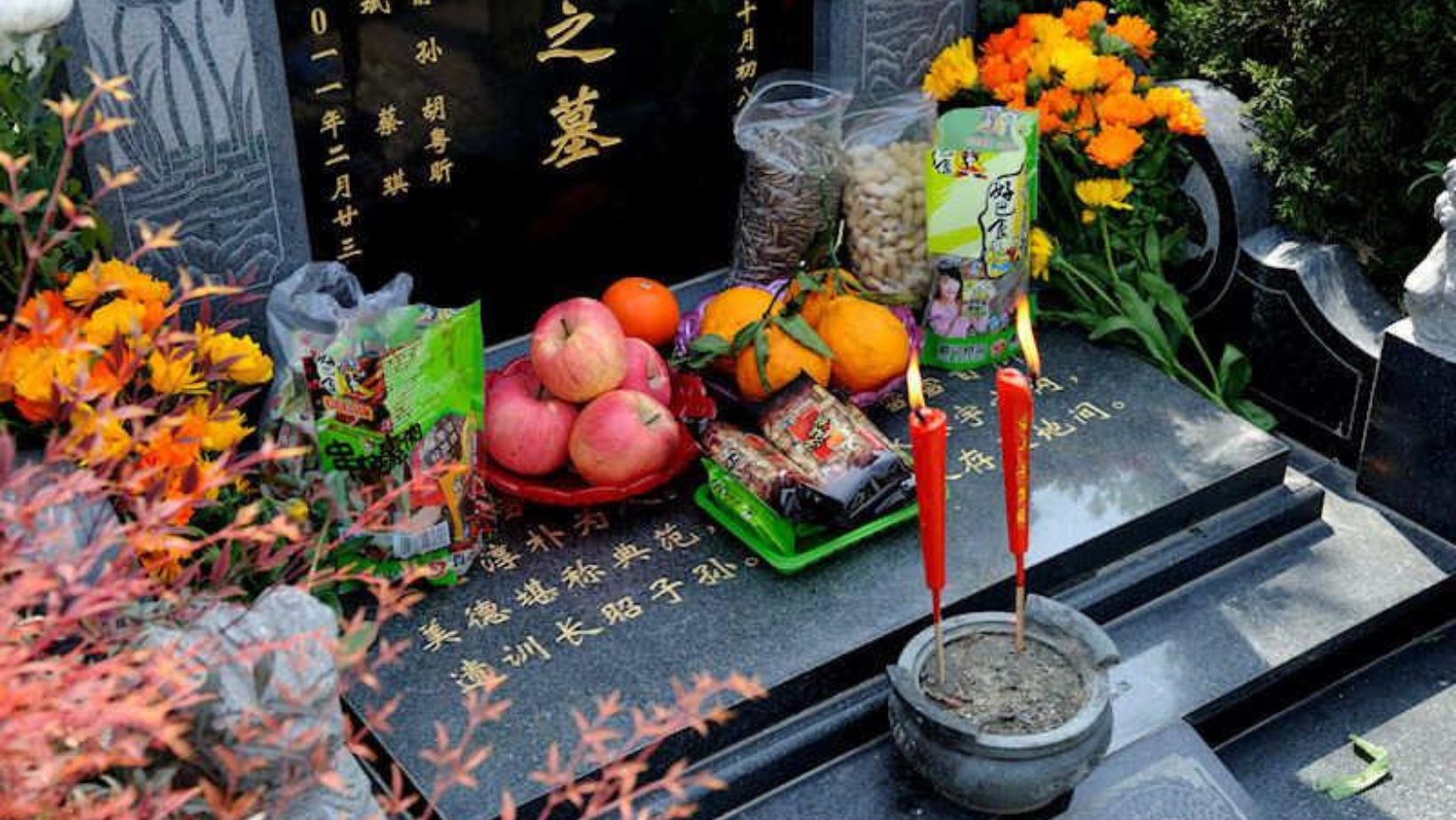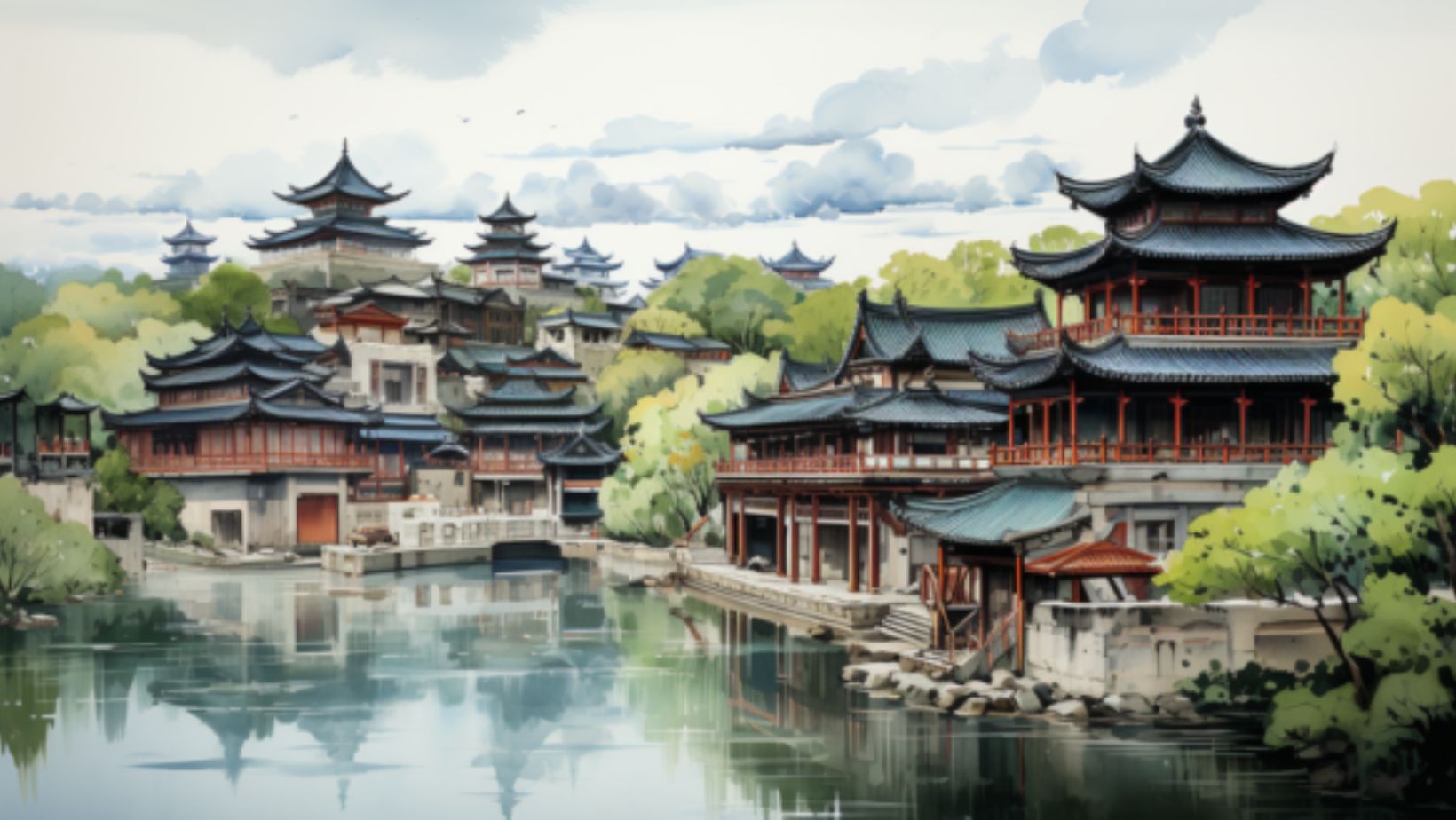Welcome to the fascinating world of the Shang Dynasty! This ancient era, lasting from around 1600 to 1046 BCE, marks a pivotal moment in Chinese history. As one of the earliest recorded dynasties, the Shang laid the foundation for Chinese civilization. Their advancements in bronze metallurgy, writing, and governance significantly shaped the future. The Bronze Age was a time of innovation and change, influencing culture, art, and technology. Join us as we explore the mysteries of the Shang Dynasty and uncover how this remarkable period continues to resonate in modern China.
Historical Context: Shang Dynasty

The Shang Dynasty emerged around 1600 BCE, marking a significant shift in ancient Chinese civilization. This period is characterized by the transition from prehistoric cultures to a more organized society. The Shang established the first historically verified dynasty in China, laying the groundwork for future governance. They developed a complex social structure, centralized political authority, and a system of writing.
Before the Shang, various prehistoric cultures existed, such as the Yangshao and Longshan. These cultures laid the foundations for agriculture and settled life. The Shang advanced these practices, leading to increased agricultural productivity and social organization.
The dynasty is noted for its advancements in bronze metallurgy, which allowed for the production of weapons, tools, and ceremonial vessels. This innovation not only enhanced warfare but also played a key role in religious and cultural practices. The Shang Dynasty’s timeline is critical in understanding the development of Chinese history and culture, as it marked the beginning of written records and significant societal changes.
Political Structure of the Shang Dynasty
The Shang Dynasty was characterized by a strong monarchy, where the king held absolute power. This centralized authority allowed the king to make decisions regarding military actions, religious practices, and governance. The monarch was seen as a divine figure, responsible for maintaining harmony between the heavens and the earth.
Kings were supported by a class of nobility who played significant roles in administration and military leadership. These nobles governed various territories and were responsible for collecting taxes and providing soldiers for the king’s campaigns. Loyalty to the king was essential, as it ensured stability within the realm.
The political structure also included a council of advisors, who assisted the king in decision-making. This council comprised trusted nobles and skilled bureaucrats who offered insights on governance and military strategies. Their expertise helped maintain the kingdom’s order and prosperity.
Additionally, religious rituals were integral to governance, as kings often consulted ancestral spirits to guide their decisions. This connection between politics and religion reinforced the king’s authority, further solidifying the political framework of the Shang Dynasty. The intricate political structure of the Shang set the foundation for future dynasties in China.
Bronze Technology and Artistry
The Shang Dynasty is renowned for its advancements in bronze metallurgy, marking a significant period in ancient Chinese history. The Shang craftsmen developed sophisticated techniques for smelting and casting bronze, allowing for the production of high-quality metal objects. They utilized clay molds and a lost-wax casting method, which enabled intricate designs and detailed artistry in their bronze works.
Bronze vessels played a crucial role in Shang culture. These vessels were used for rituals, feasting, and ancestor worship, highlighting their religious significance. The shapes and designs often reflected the social status of their owners, with elaborate decorations showcasing the skill of the artisans. This emphasis on aesthetics reinforced the connection between power, prestige, and religion.
In addition to vessels, the Shang also created bronze tools and weapons, enhancing their military capabilities. The durability and strength of bronze allowed for more effective tools for agriculture, hunting, and warfare. This technological advancement contributed to the growth of the Shang economy and the expansion of their territory.
Overall, bronze technology and artistry were pivotal in shaping Shang society, reflecting its cultural values and technological innovations. The legacy of Shang bronze work continues to influence Chinese culture and art today.
Religious Practices and Ancestor Worship

The Shang Dynasty had a rich tapestry of religious beliefs and rituals. Central to their spirituality was the worship of a pantheon of gods, including a supreme deity known as Shangdi. They believed these gods controlled natural forces and human fate. Rituals included offerings, sacrifices, and ceremonies designed to appease these deities and ensure their favor.
Ancestor worship was particularly significant in Shang society. The Shang people believed that their ancestors held great power and could influence their lives. To honor their ancestors, families would conduct elaborate rituals, often involving offerings of food, wine, and valuable items. This practice not only reinforced familial bonds but also connected the living to their heritage.
The Shang kings played a vital role in religious practices. They acted as intermediaries between the gods and the people, conducting rituals on behalf of their subjects. The king’s ability to communicate with the divine was seen as essential for maintaining order and prosperity within the kingdom. Overall, religious practices and ancestor worship were foundational to the Shang Dynasty, shaping its culture and societal structure.
Writing System and Oracle Bones
The Shang Dynasty was crucial in developing early Chinese writing. This writing system began as simple pictographs, evolving into a more complex form that conveyed ideas and sounds. The characters were often inscribed on various surfaces, including bronze vessels and bamboo strips. This advancement laid the groundwork for the Chinese writing system used today.
Oracle bones played a significant role in Shang society. These were typically ox scapulae or turtle shells used for divination. Priests would carve questions about the future into the bones and then apply heat until they cracked. The patterns of these cracks were interpreted as answers from the ancestors or deities.
In addition to divination, oracle bones served as important record-keeping tools. They documented events, rituals, and significant decisions, providing insights into the culture and beliefs of the Shang people. Scholars have studied these inscriptions to understand the language, history, and social structure of ancient China better. Overall, the writing system and oracle bones were instrumental in shaping Shang civilization and its legacy.
Social Structure and Daily Life
The social structure of the Shang Dynasty was hierarchical and complex. At the top were the royal family and the nobility, who held significant power and land. They played crucial roles in governance, military leadership, and religious ceremonies. Below them were the artisans, farmers, and laborers, who contributed to the economy and daily functioning of society.
Daily life in Shang society varied significantly based on social status. Nobles lived in large houses made of wood, while commoners resided in simpler dwellings made of mud and thatch. The nobles enjoyed various luxuries, including elaborate clothing, fine foods, and ornate bronze vessels. In contrast, the majority of the population engaged in agriculture and manual labor, working long hours to support their families.
Religious practices also influenced daily life. Ancestor worship was central, and families often made offerings to honor their forebears. Rituals and festivals were common, providing a sense of community and shared culture. Overall, the social hierarchy and daily activities in Shang society reflected a structured civilization with distinct roles and responsibilities.
Military Organization and Warfare
The military organization of the Shang Dynasty was highly structured and essential for its expansion and defense. The king was the supreme commander of the armed forces, supported by noble generals who led specific units. These units were composed of foot soldiers, archers, and charioteers, equipped with bronze weapons and armor. The military’s strength lay in its well-trained troops and advanced technology.
Key battles defined the Shang’s military history. The dynasty frequently engaged in conflicts with neighboring tribes to expand its territory and influence. One notable battle involved the conquest of the neighboring Xia Dynasty, solidifying Shang power in the region.
Military strategies included the use of chariots for mobility and speed, enabling quick attacks and retreats. Additionally, Shang forces utilized archery and infantry to overpower their opponents in close combat. The effectiveness of these strategies contributed to the dynasty’s success and stability. Ultimately, the Shang military organization played a critical role in shaping ancient China’s geopolitical landscape.
Trade and Economy
The Shang Dynasty’s economy thrived on agriculture, trade, and commerce. Farming was the backbone of the economy, with staple crops like millet and rice cultivated using advanced techniques. The surplus from agriculture allowed for population growth and supported a complex society. As farming flourished, the Shang established extensive trade networks with neighboring regions.
Trade networks facilitated the exchange of goods, including silk, jade, and bronze artifacts. These networks linked the Shang with other cultures, enhancing economic prosperity. The dynasty’s craftsmen produced high-quality bronze tools and ceremonial vessels, which became valuable trade items. This commerce not only enriched the Shang economy but also fostered cultural exchanges.
Additionally, the Shang engaged in tribute systems with conquered territories. These tributes ensured a steady flow of resources and demonstrated the dynasty’s power. Overall, agriculture and commerce were vital in sustaining the Shang Dynasty, enabling it to thrive and expand its influence in ancient China. The economic practices established during this period laid the groundwork for future dynasties.
Cultural Developments and Achievements
The Shang Dynasty was a period of significant cultural advancements in ancient China. Art flourished, particularly in bronze casting, where intricate designs and inscriptions showcased the skills of Shang artisans. These bronze vessels were not just functional but also served ceremonial purposes, reflecting the dynasty’s religious beliefs. Pottery also thrived, with the creation of high-fired ceramics that displayed both utility and artistry.
Music played a vital role in Shang culture, often accompanying rituals and ceremonies. The dynasty used various instruments, including bells, flutes, and drums, to enhance their cultural expressions. These musical traditions influenced later Chinese music, establishing a foundation for future artistic endeavors.
Moreover, Shang culture had a lasting impact on subsequent dynasties. The techniques developed in bronze metallurgy and pottery were adopted and refined by later civilizations. Additionally, the religious practices and ancestor worship established during the Shang era shaped the spiritual landscape of China for centuries. Overall, the cultural achievements of the Shang Dynasty laid the groundwork for the rich artistic and cultural heritage that followed in Chinese history.
The Decline of the Shang Dynasty
The Shang Dynasty’s decline resulted from multiple internal and external factors. One key issue was the weakening of royal authority. Corruption and mismanagement among the nobility led to unrest and dissatisfaction among the people. Additionally, the Shang faced increasing pressure from rival states, particularly the Zhou, who sought to expand their influence.
The economic situation also played a role in the dynasty’s decline. Frequent wars drained resources and weakened the agricultural base. This instability made it difficult for the Shang to maintain a strong military and support their population.
Moreover, the Shang’s reliance on ancestral worship and ritual sacrifices was challenged as their enemies adopted new ideologies. The Zhou presented themselves as morally superior, promoting the idea of the “Mandate of Heaven.” This concept justified their rebellion against the Shang.
The fall of the Shang Dynasty in 1046 BCE marked a significant transition to the Zhou Dynasty. The Zhou established a new political order, which emphasized decentralized governance and expanded cultural practices. This shift laid the foundation for a new era in Chinese history, profoundly impacting the region’s political landscape.
Legacy of the Shang Dynasty

The Shang Dynasty left a profound legacy in Chinese history, culture, and governance. Its innovations in bronze metallurgy laid the foundation for advanced craftsmanship and technology in later dynasties. The Shang’s development of a writing system was pivotal in shaping Chinese literature and communication. This early form of writing allowed for record-keeping and the transmission of knowledge.
In terms of governance, the Shang established a model of centralized authority that influenced future dynasties. Their political structure, which included a monarchy supported by a noble class, became a template for subsequent rulers. The concept of ancestral worship, deeply embedded in Shang society, continued to influence Chinese spiritual practices for centuries.
Culturally, the Shang Dynasty’s achievements in art, pottery, and music set high standards for future generations. Many of these cultural elements were preserved and evolved in later periods, such as the Zhou Dynasty. Overall, the Shang Dynasty’s contributions shaped the trajectory of Chinese civilization, providing a rich cultural and political heritage that would endure throughout history.
Conclusion: Shang Dynasty
The Shang Dynasty was a pivotal era in ancient China, marked by significant advancements in bronze technology, military organization, and writing systems. Its political structure and religious practices laid the groundwork for future dynasties. Additionally, the cultural achievements in art and music had a lasting impact on Chinese identity. Understanding the Shang Dynasty is crucial for grasping the complexities of ancient Chinese civilization. This period not only set the stage for the Zhou Dynasty but also contributed to the rich tapestry of Chinese history, influencing its governance, culture, and social practices for generations to come.
FAQs
What were the main achievements of the Shang Dynasty?
The Shang Dynasty is renowned for its advancements in bronze metallurgy, development of a writing system, and establishment of complex social structures. It also made significant contributions to art and pottery, which have influenced later Chinese cultures.
How did the Shang Dynasty influence later Chinese dynasties?
The Shang laid the groundwork for political organization and governance in ancient China. Their religious practices, social hierarchies, and cultural achievements influenced subsequent dynasties, particularly in terms of governance and artistic expression.
What was the role of women in Shang society?
Women in Shang society held various roles, often centered around family and domestic responsibilities. While male lineage typically dominated, some women were influential, especially those in the royal family who could exert power in political and religious contexts.
What materials did the Shang use for trade?
The Shang Dynasty engaged in trade involving materials like silk, jade, and bronze. They established trade networks that allowed for the exchange of goods with neighboring regions, contributing to their economy.
What evidence do we have of the Shang Dynasty’s existence?
Archaeological findings, including oracle bones, bronze artifacts, and royal tombs, provide substantial evidence of the Shang Dynasty’s existence and culture. These artifacts help historians understand the social structure, religious beliefs, and technological advancements of the period.

